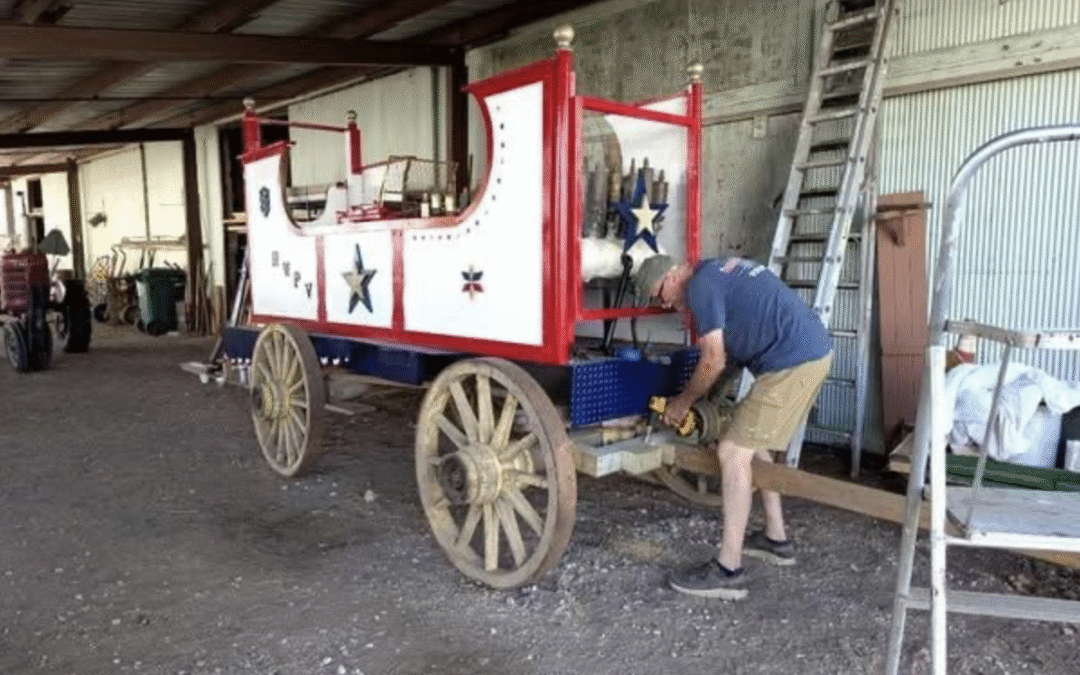The calliope is a fascinating musical instrument that holds a unique place in history. Known for its loud, shrill sound that can be heard for miles, the calliope was a staple at circuses and fairs, where it attracted crowds with its distinctive melody.
The calliope was invented in the United States around 1850 by A.S. Denny and was later patented in 1855 by Joshua C. Stoddard. The calliope operated mechanically, relying on the precision of the roller and pins to produce music. However, as the device evolved, so did its method of operation. Joshua C. Stoddard eventually replaced the cylinder with a keyboard, transforming the calliope into an instrument that could be played manually, much like an organ.
The operation of a steam calliope involves the use of steam generated from a boiler. Musicians control the steam flow to each whistle using a keyboard, similar to that of a traditional organ. The steam passes through the whistles, producing a sound that is both powerful and unmistakable. This mechanism made the steam calliope an impressive feat of engineering, combining musical artistry with mechanical innovation. The keyboards were often made from brass, chosen for its ability to withstand the heat and moisture generated by steam. Additionally, the polished brass keys added a golden shine, contributing to the visual allure of the calliope.
Stoddard’s original model included a keyboard with eight notes, each releasing a whistle to which steam was channeled at a pressure of 180 pounds. Later models increase in size with 24, 32 and 48 whistles. This steam-whistle organ became an iconic symbol of entertainment during the 19th century, particularly in traveling circuses and riverboats. Its ability to produce music that could be heard over long distances made it an ideal choice for drawing in audiences.
On riverboats, the steam calliope was a natural fit. These boats were already equipped with steam propulsion boilers, which powered not only the engines but also the calliopes. As the riverboats traveled along America’s waterways, the calliope’s music would herald their approach, adding a festive atmosphere and drawing the attention of those along the banks.
Circuses incorporated the steam calliope into steam-driven carousels, taking advantage of the steam supply already in use for other attractions. In circus parades, the calliope traditionally took the last position. It was often mounted on a wagon, either self-contained or pulled by a traction engine, which could also provide electric power for lighting. The presence of steam boilers throughout the circus meant that there was always fuel and expertise available to operate the calliope effectively.
Beyond its practical uses, the calliope became a cultural icon, symbolizing the excitement and spectacle of the circus. Its music would signal the arrival of entertainment and joy, creating a sense of anticipation and wonder. The calliope’s place in history is not only in its musical contribution but also in its ability to evoke the spirit of a bygone era of American entertainment.
Today, while steam calliopes are not as prevalent, they remain beloved relics of a bygone era. Some enthusiasts and collectors maintain and operate these instruments, preserving their legacy and sharing their unique sound with new generations. Steam calliopes can still be found at some fairs and historical events, captivating audiences with their nostalgic charm. The Harold Warp Pioneer Village acquired its calliope around the time it acquired the historic Armitage Herschell Carousel and steam engine back in the mid-1950s. None of these items were part of an original set, rather they were acquired from different sources. The calliope at the village dates back to the 1860s and has recently been restored although it remains inoperable until a future restoration.
Spot an Item featured in this month’s American Confetti column. While exploring the exhibits,
keep an eye out for a specific item highlighted in the article. It’s a fun way to challenge your observational skills and enhance your appreciation of the museum’s collections.
Share Your Discoveries! After identifying the item stop by our museum gift shop during regular
business hours (which is always free for everyone). Share your findings with our friendly staff by telling us where the item is located or snap a quick photo. We’d love to hear what you learned about it!
Enter the Drawing! Correctly identifying the item.
Last month’s article featured a Prestolite Acetylene torch found in the Main Museum Building westside auto collection.


Recent Comments